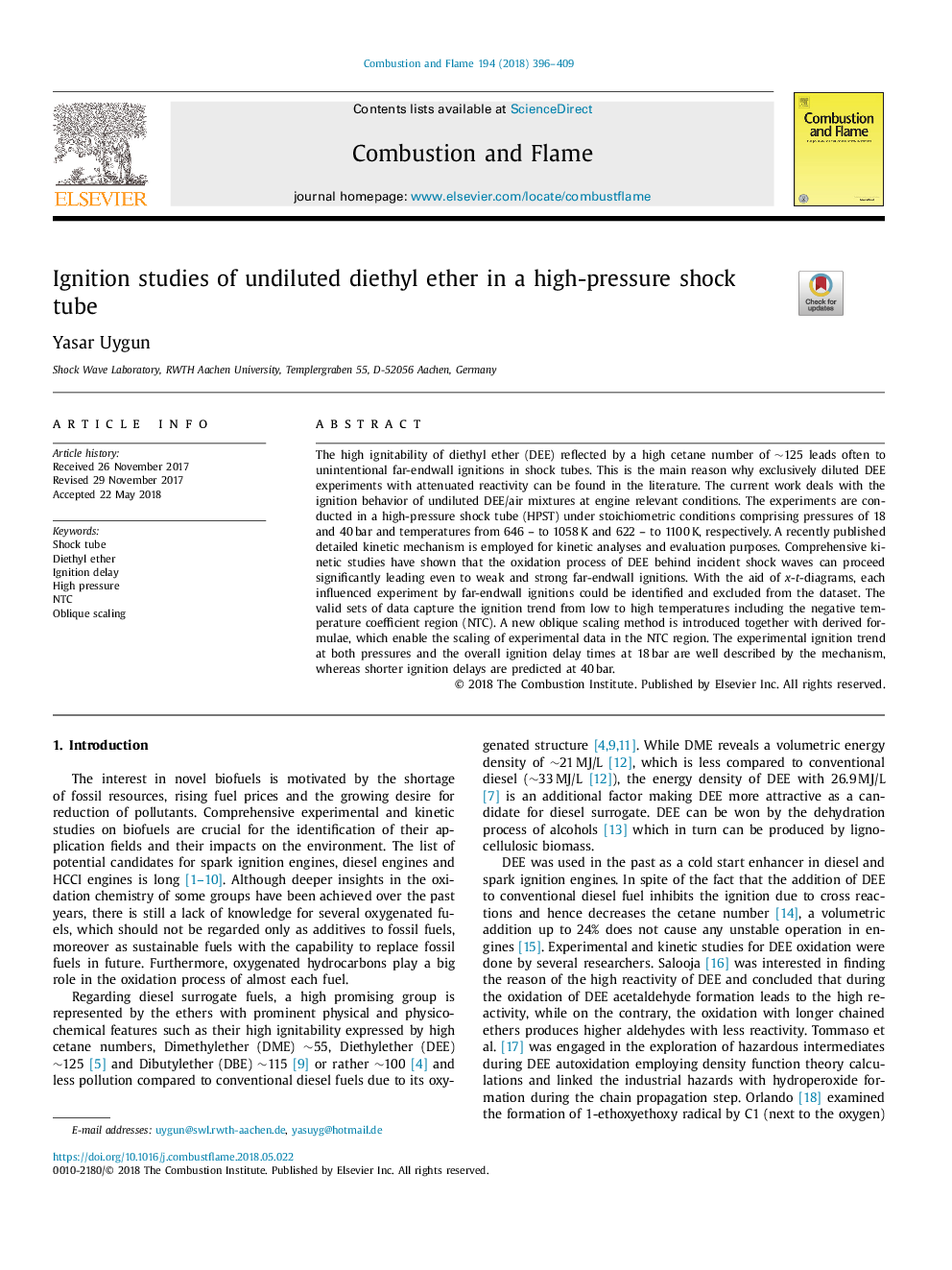| Article ID | Journal | Published Year | Pages | File Type |
|---|---|---|---|---|
| 6593506 | Combustion and Flame | 2018 | 14 Pages |
Abstract
The high ignitability of diethyl ether (DEE) reflected by a high cetane number of â¼125 leads often to unintentional far-endwall ignitions in shock tubes. This is the main reason why exclusively diluted DEE experiments with attenuated reactivity can be found in the literature. The current work deals with the ignition behavior of undiluted DEE/air mixtures at engine relevant conditions. The experiments are conducted in a high-pressure shock tube (HPST) under stoichiometric conditions comprising pressures of 18 and 40â¯bar and temperatures from 646 to 1058â¯K and 622 to 1100â¯K, respectively. A recently published detailed kinetic mechanism is employed for kinetic analyses and evaluation purposes. Comprehensive kinetic studies have shown that the oxidation process of DEE behind incident shock waves can proceed significantly leading even to weak and strong far-endwall ignitions. With the aid of x-t-diagrams, each influenced experiment by far-endwall ignitions could be identified and excluded from the dataset. The valid sets of data capture the ignition trend from low to high temperatures including the negative temperature coefficient region (NTC). A new oblique scaling method is introduced together with derived formulae, which enable the scaling of experimental data in the NTC region. The experimental ignition trend at both pressures and the overall ignition delay times at 18â¯bar are well described by the mechanism, whereas shorter ignition delays are predicted at 40â¯bar.
Related Topics
Physical Sciences and Engineering
Chemical Engineering
Chemical Engineering (General)
Authors
Yasar Uygun,
